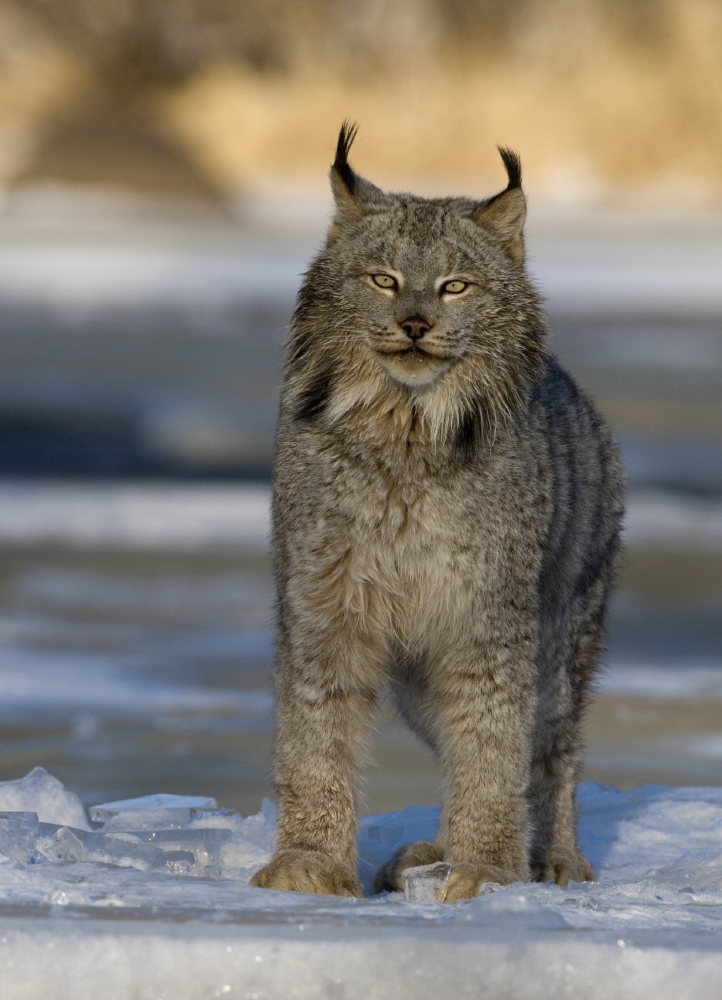If there is a single wildlife species that is emblematic of the Maine North Woods, it is the Canada lynx.
Lynx are predators that require large patches of unfragmented boreal forest to feed, rest and raise their young. They thrive in cold, snowy conditions, where their large paws and thick fur help them get through the long winter months chasing their favorite prey, the snowshoe hare.
Canada Lynx are a federally threatened species in Maine because of their small population. Maine is the only state in the east with a population of lynx, so we have a responsibility to do all we can to help them. A new ruling by the U.S. Fish and Wildlife Service, however, puts lynx at risk of being harmed when caught in traps that are set for other, non-threatened wildlife.
TOO MANY OTHER THREATS
The “incidental take permit,” or ITP, to allow accidental capture of lynx by trappers falls short of the agency’s mandate to protect the species. USFWS will allow up to 195 lynx to be captured over the 15-year term of the permit. Given how little is being asked of trappers to minimize their impacts on lynx, this first-in-the nation approval of an incidental take permit for lynx sets a troubling precedent.
If climate change impacts are factored in, the ITP becomes even more troubling. Cold weather and snowy winters help lynx out-compete the bobcat, coyote and fisher. Yet warming temperatures will likely bring less snow to the boreal forest. Climate change could also increase parasites and disease – and these changes can happen very quickly (just look at the winter tick infestation of our Maine moose). As the climate changes during the next 15 years, a shortage of food and an increase in disease or parasites could further stress the animals, with any incidental capture compounding that stress.
For at least ten years, the Maine Department of Inland Fisheries and Wildlife has urged the federal agency to permit incidental capture of lynx as a means to allow fur trapping to continue across a large swath of northern Maine that the federal agency has designated as critical habitat for lynx.
The state estimates that there are about 750-1,000 lynx in Maine, but no one really knows the size of either the current or historical population. Given the lack of population data and the impacts of climate change on lynx, it is disappointing that the federal agency did not take a more precautionary approach, one that allows trapping to continue, but also ensures minimal impact on lynx.
Under the ITP, Maine trappers can continue to use traps and techniques that have a high risk of injury or death for lynx. Other states and Canada have minimized risk to lynx by restricting the use of these traps and techniques – some of which were also prohibited in Maine under a consent decree from a lawsuit over trapping in lynx-critical habitat. The ITP replaces the consent decree.
Another concern is that the ITP relies on self-reporting from trappers, despite evidence that some captures already go unreported. Because trappers know that each reported capture could count against the 195-animal limit in the take permit, there may be little incentive to self-report unintentional trapping of lynx.
The ITP requires IFW to offset the capture of lynx by providing lynx-friendly habitat, which is young spruce/fir forest. This means any habitat set aside for lynx must be managed to maintain young trees. Instead of requiring IFW to work with a private landowner that already has young spruce/fir forest habitat, USFWS approved IFW’s proposal to manage 6,200 acres on the 22,045 acres of the state’s Bureau of Parks and Lands Seboomook Unit in northern Maine.
BALL’S IN STATE’S COURT
As a result, the state will cut a significant block of the increasingly rare mature forest in northern Maine, which would be better left for American marten, wintering whitetail deer and migratory forest birds.
Some wildlife advocates are planning to sue the federal agency over the take permit. But does Maine really need any more conflict over wildlife management, especially when that conflict can be so easily averted?
The ball is now in IFW’s court. As the agency that is managing lynx in Maine, IFW has the opportunity to go beyond the minimum requirements in the ITP. IFW can require all trappers to use traps and techniques adopted by other states that are more protective of lynx and require third-party checks on trap lines where lynx could be caught. This could help address concerns that conservationists have raised and thereby accommodate all the interests involved.
— Special to the Telegram
Send questions/comments to the editors.



Success. Please wait for the page to reload. If the page does not reload within 5 seconds, please refresh the page.
Enter your email and password to access comments.
Hi, to comment on stories you must . This profile is in addition to your subscription and website login.
Already have a commenting profile? .
Invalid username/password.
Please check your email to confirm and complete your registration.
Only subscribers are eligible to post comments. Please subscribe or login first for digital access. Here’s why.
Use the form below to reset your password. When you've submitted your account email, we will send an email with a reset code.